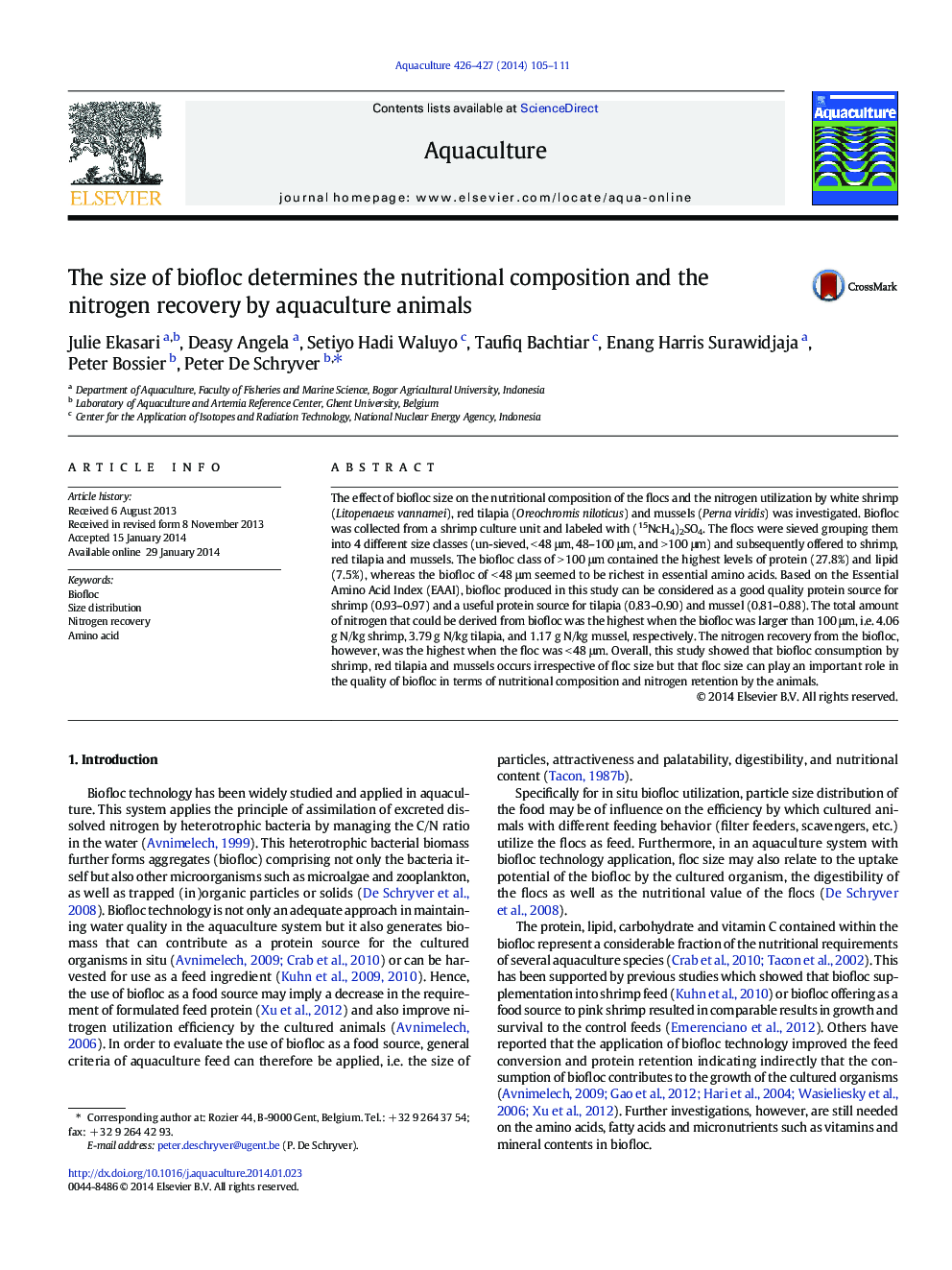| Article ID | Journal | Published Year | Pages | File Type |
|---|---|---|---|---|
| 8495148 | Aquaculture | 2014 | 7 Pages |
Abstract
The effect of biofloc size on the nutritional composition of the flocs and the nitrogen utilization by white shrimp (Litopenaeus vannamei), red tilapia (Oreochromis niloticus) and mussels (Perna viridis) was investigated. Biofloc was collected from a shrimp culture unit and labeled with (15NcH4)2SO4. The flocs were sieved grouping them into 4 different size classes (un-sieved, < 48 μm, 48-100 μm, and > 100 μm) and subsequently offered to shrimp, red tilapia and mussels. The biofloc class of > 100 μm contained the highest levels of protein (27.8%) and lipid (7.5%), whereas the biofloc of < 48 μm seemed to be richest in essential amino acids. Based on the Essential Amino Acid Index (EAAI), biofloc produced in this study can be considered as a good quality protein source for shrimp (0.93-0.97) and a useful protein source for tilapia (0.83-0.90) and mussel (0.81-0.88). The total amount of nitrogen that could be derived from biofloc was the highest when the biofloc was larger than 100 μm, i.e. 4.06 g N/kg shrimp, 3.79 g N/kg tilapia, and 1.17 g N/kg mussel, respectively. The nitrogen recovery from the biofloc, however, was the highest when the floc was < 48 μm. Overall, this study showed that biofloc consumption by shrimp, red tilapia and mussels occurs irrespective of floc size but that floc size can play an important role in the quality of biofloc in terms of nutritional composition and nitrogen retention by the animals.
Related Topics
Life Sciences
Agricultural and Biological Sciences
Aquatic Science
Authors
Julie Ekasari, Deasy Angela, Setiyo Hadi Waluyo, Taufiq Bachtiar, Enang Harris Surawidjaja, Peter Bossier, Peter De Schryver,
